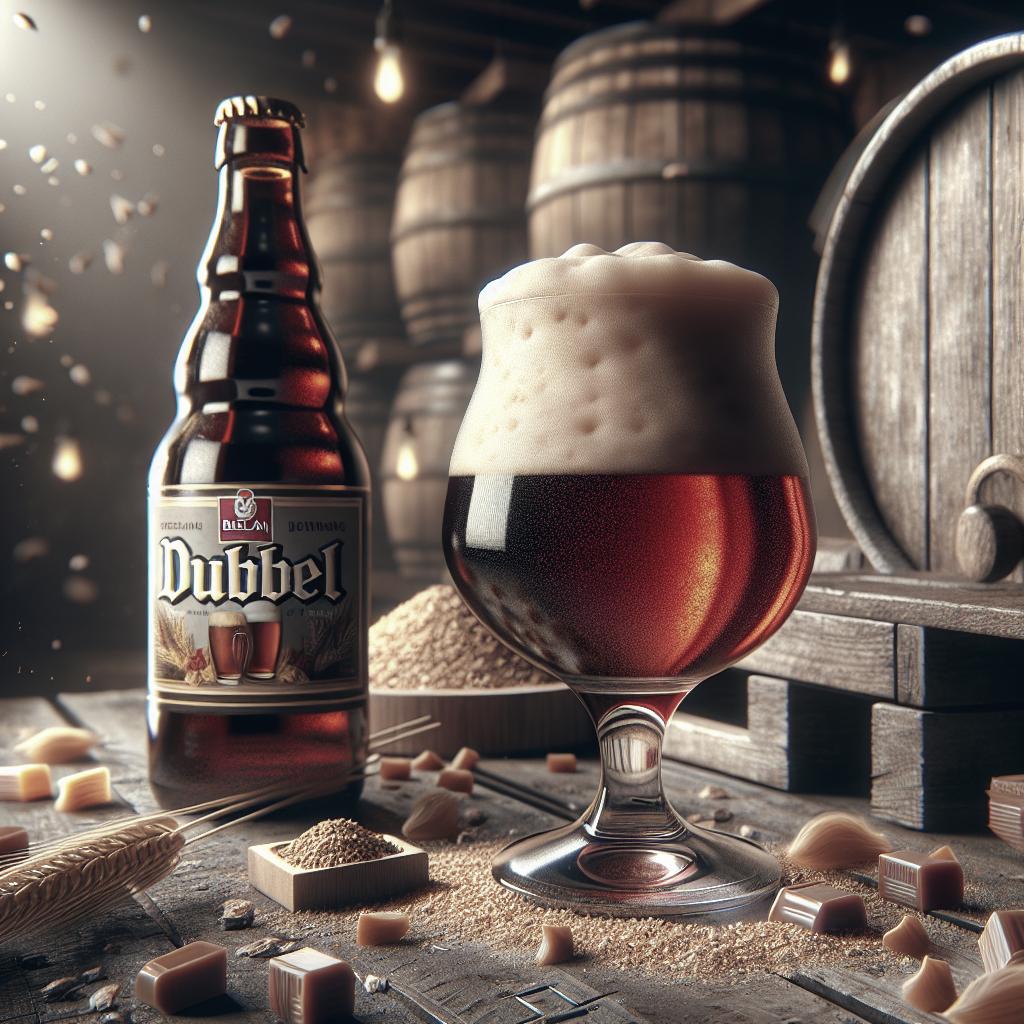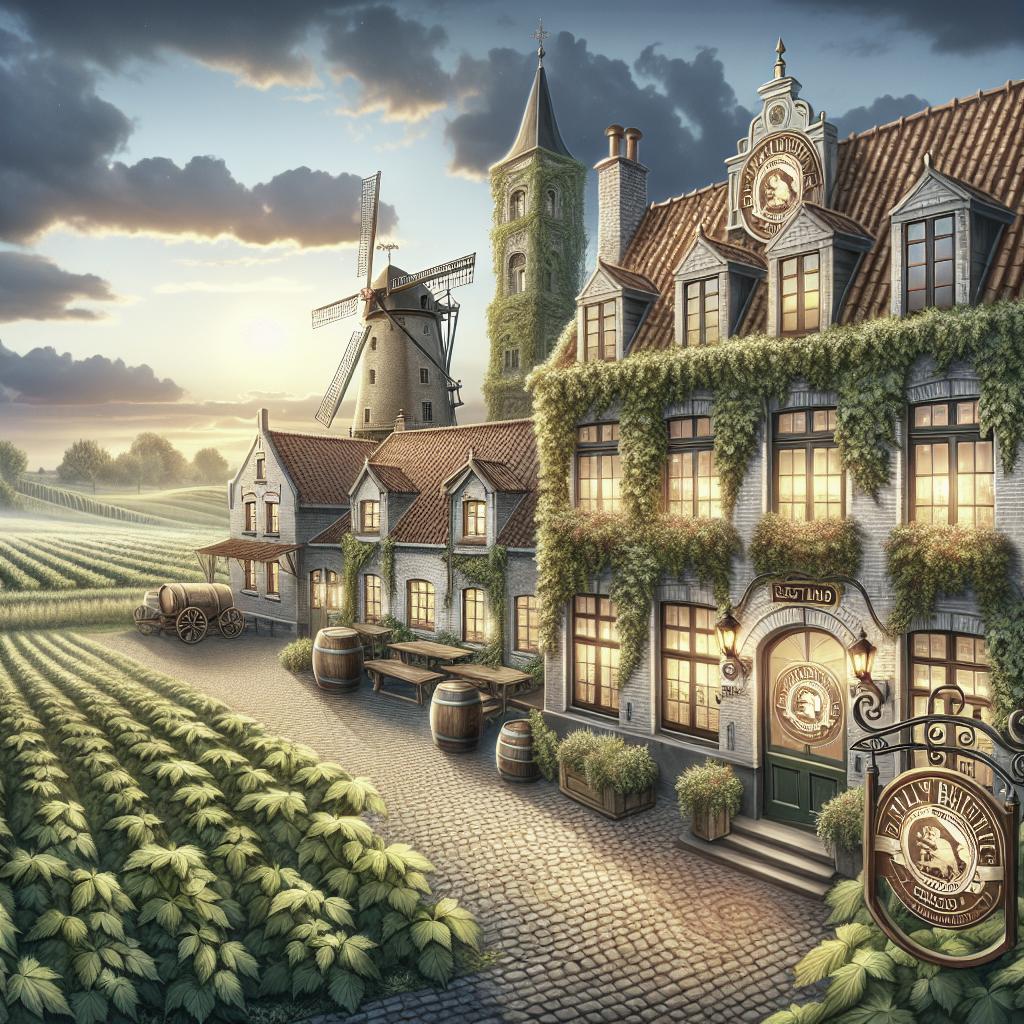“`html
The Unique Characteristics of Belgian Dubbel
The Belgian Dubbel is a captivating beer style renowned for its rich and complex profile. Rooted in monastic brewing traditions, this beer boasts a delightful blend of flavors and aromas that have made it a staple in Belgian-style brewing. From its profound appearance to its enticing aroma, and its malt-forward flavor with a hint of spice, the Dubbel is a testament to the art of brewing. In this blog post, we’ll explore the distinct characteristics that define a Belgian Dubbel, delving into its appearance, aroma, flavor, mouthfeel, and more. Whether you’re a beer enthusiast or a curious novice, join us as we uncover the nuances of this beloved Belgian ale.
Overall Impression
Belgian Dubbel is an alluring beer style that impresses with its rich malty sweetness, moderate bitterness, and overall balance. Known for its inviting complexity, it tantalizes the palate with layers of flavors that intertwine seamlessly. Dubbels often present a robust profile that invites exploration, perfect for drinkers who appreciate nuanced flavors.
The alcohol warmth in a Dubbel is well-integrated, contributing to a smooth drinking experience while never overpowering the malt character. These beers are often seen as a bridge between darker ales and those with higher alcohol content, making them accessible yet sophisticated.
Appearance
A Belgian Dubbel typically displays a deep reddish-brown to dark copper hue, which is both deep and clear. This captivating color is one of its defining features, resulting from the malts used in brewing. On pouring, a considerable head of light tan to off-white foam forms, providing excellent head retention.
The beer’s clarity is notable, with most examples presenting brilliant clarity despite their darker color – a testament to the careful brewing process. The carbonation is lively, contributing to a gentle effervescence that further enhances its visual appeal.
Aroma
The aroma of a Belgian Dubbel is a sensory delight with an immediate impact of rich malt character, often evoking bread crusts, toasty notes, and caramel. Distinctive fruity esters reminiscent of raisins, plums, and sometimes even dried cherries intermingle with subtle spicy phenols.
As the beer warms, hints of cloves and black pepper can become more pronounced, reflecting the Belgian yeast used in production. These complex aroma elements combine harmoniously, hinting at the layered flavor profile that awaits the drinker.
Flavor
Flavor is where the Belgian Dubbel truly shines. Its taste profile is a delightful balance of malt sweetness, dark fruits, and a gentle touch of spice, making every sip an adventure. The caramel and toasty malt flavors are usually prominent, accompanied by plum or fig-like flavors that offer a rich, complex experience.
A subtle bitterness offsets the sweetness, enough to balance the palate without overwhelming the malt character. The aftertaste leaves a lingering warmth from the alcohol, along with residual malt sweetness and a touch of spice, enhancing its satisfying finish.
Mouthfeel
Belgian Dubbel is known for its medium to full-bodied mouthfeel, which envelops the palate with a smooth, velvety texture. This is enhanced by moderate carbonation that creates a gentle fizziness, adding to the beer’s refreshing quality despite its richness.
The slight warmth from the alcohol is present but never harsh, contributing to a well-rounded and smooth mouthfeel. The Dubbel’s body and carbonation work together to support its complex flavors, making it a satisfying beer to linger over.
Comments
Belgian Dubbel is often considered one of the quintessential traditional Belgian styles, reflecting the historical artistry of monastic brewing. Authentic examples of this style prioritize complexity and balance, offering depth without the overwhelming intensity found in some other strong ales.
Notably, the Dubbel is distinct for its drinkability despite its potential higher alcohol content, serving as a testament to the skill of the brewers who originally crafted it. The intrinsic connection to monastic heritage can enhance the drinker’s appreciation of its intricate profiles.
History
The origins of the Belgian Dubbel date back to the medieval monastic brewing tradition, where Trappist monks brewed in monasteries across Europe. The modern Dubbel style was largely popularized in the mid-20th century, embodying a centuries-old heritage that has been refined over time.
Westmalle Abbey is often credited with developing the Dubbel style as we know it today. The monks refined their brew to produce a rich and malty ale that could sustain them during fasting periods—a tradition that resonates within the beer to this day. Continued reverence for its heritage ensures that Belgian Dubbel remains a beloved style among beer aficionados worldwide.
Characteristic Ingredients
The hallmark of a Belgian Dubbel’s flavor profile stems from its carefully selected ingredients. The malt bill is the foundation, typically featuring pale malt, caramelized malts, and sometimes a touch of dark malts to impart its signature deep color and rich malt flavors.
Belgian yeast strains play a crucial role, contributing to the characteristic fruity esters and spicy phenols. A restrained use of hops ensures a balance without overshadowing the malt, with noble varieties being common choices to complement the style. Overall, the ingredients are selected to reinforce the beer’s complexity and depth while allowing the yeast character to shine.
Style Comparison
Within the landscape of Belgian ales, the Dubbel stands distinct yet shares similarities with other styles, such as the Belgian Tripel and the Quadrupel. Compared to a Tripel, Dubbels are darker, maltier, and often feature more pronounced caramel and toasty notes.
In contrast with Quadrupels, Dubbels maintain a lower alcohol content and less intensity in flavor complexity, focusing on balance and drinkability. This positions the Dubbel as a versatile choice for those who desire a rich, flavorful beer without the higher alcohol levels of its stronger cousins.
Vital Statistics
IBU
The International Bitterness Units (IBU) for Belgian Dubbel typically ranges from 15 to 25. This moderate bitterness level allows for balance with the malt sweetness and the fruity esters derived from the yeast.
SRM
The Standard Reference Method (SRM) for color in a Belgian Dubbel falls between 10 and 17. This range gives the Dubbel its signature deep reddish-brown to dark copper color that is both appealing and indicative of its malt character.
OG
The Original Gravity (OG) of a Belgian Dubbel typically lies between 1.062 and 1.075, providing the structure for its medium to high strength. This range is crucial in achieving the balance between richness and drinkability.
FG
The Final Gravity (FG) for the Dubbel ranges from 1.008 to 1.018. This measure reflects the residual sugar level, contributing to the style’s moderate sweetness and full-bodied profile.
ABV
The Alcohol by Volume (ABV) for Belgian Dubbel is generally between 6% and 7.6%. This alcohol content is moderate for its style yet contributes to the warming finish associated with the Dubbel.
Commercial Examples
When looking to explore the Belgian Dubbel style, there are several iconic examples that stand out as benchmarks. Westmalle Dubbel is often considered the quintessential representation of the style, known for its complexity and traditional roots.
Other renowned examples include Chimay Première (Red), Rochefort 6, and La Trappe Dubbel. Each of these beers showcases the distinct qualities of the Dubbel, offering variations that highlight different nuances in flavor and aroma while remaining true to the style’s core characteristics.
Style Attributes
Belgian Dubbel is characterized by its deep amber to copper color, rich maltiness, and intricate blend of spices and fruit notes. The yeast strains used lend the beer its timeless fruity and spicy character, while controlled hopping ensures subtle bitterness.
This style is further distinguished by its historical roots and association with Trappist brewing, which imbues it with a sense of tradition and authenticity. The sensory experience of a Dubbel is both hearty and holistic, making it a preferred choice for those seeking depth and intricacy in a beer.
| Category | Detail |
|---|---|
| Overall Impression | Rich, malt-forward, balanced |
| Appearance | Deep reddish-brown, clear, good head retention |
| Aroma | Malt, fruit esters, spicy phenols |
| Flavor | Caramel, dark fruits, balanced bitterness |
| Mouthfeel | Medium to full-bodied, smooth |
| Comments | Traditional, complex, highly drinkable |
| History | Monastic roots, popularized by Trappists |
| Characteristic Ingredients | Pale, caramel, dark malts, Belgian yeast |
| Style Comparison | Darker than Tripels, less intense than Quadrupels |
| Vital Statistics: IBU | 15-25 |
| Vital Statistics: SRM | 10-17 |
| Vital Statistics: OG | 1.062-1.075 |
| Vital Statistics: FG | 1.008-1.018 |
| Vital Statistics: ABV | 6%-7.6% |
| Commercial Examples | Westmalle Dubbel, Chimay Première, Rochefort 6 |
| Style Attributes | Deep amber, malty, complex aromas and flavors |
“`


